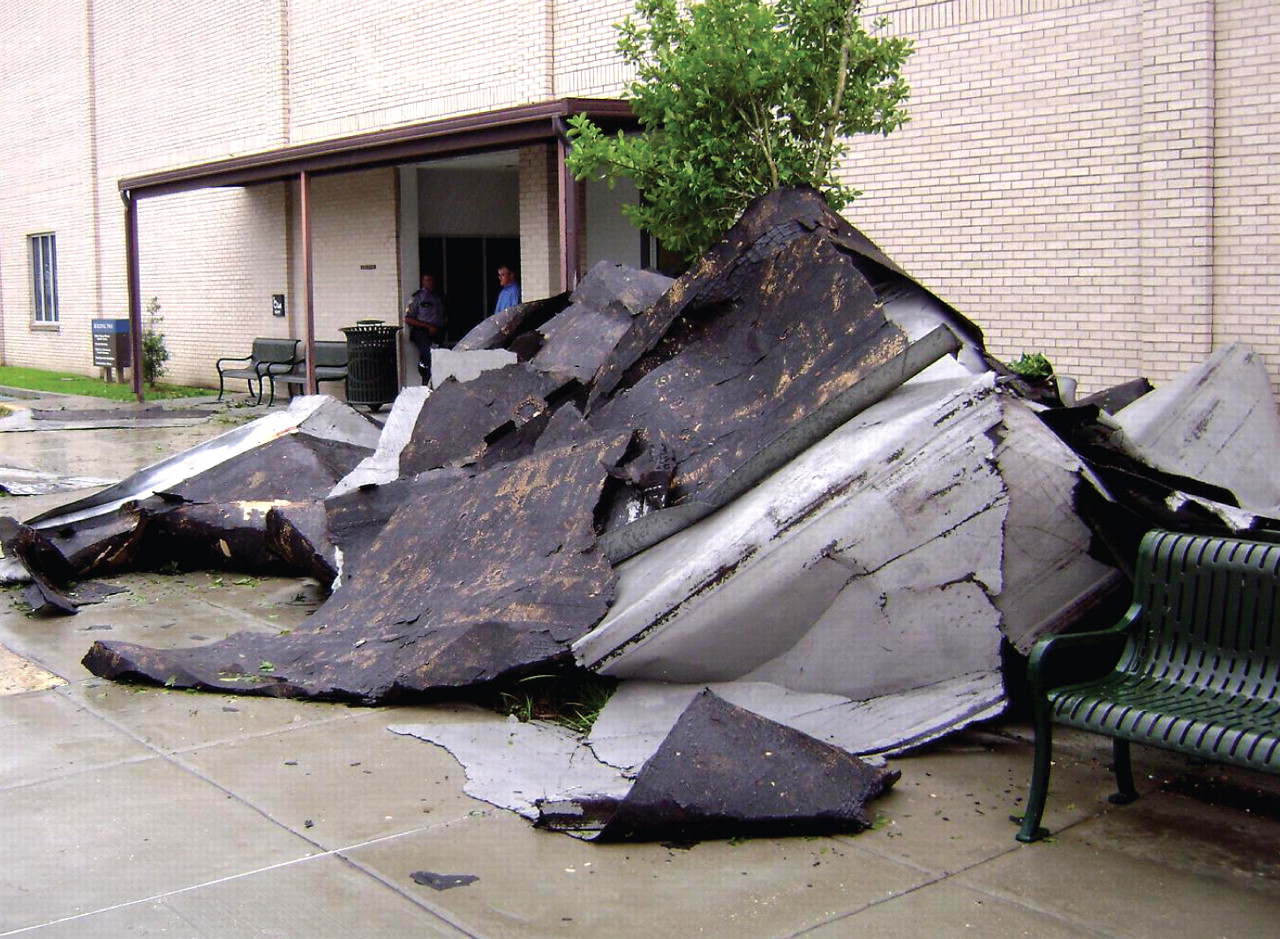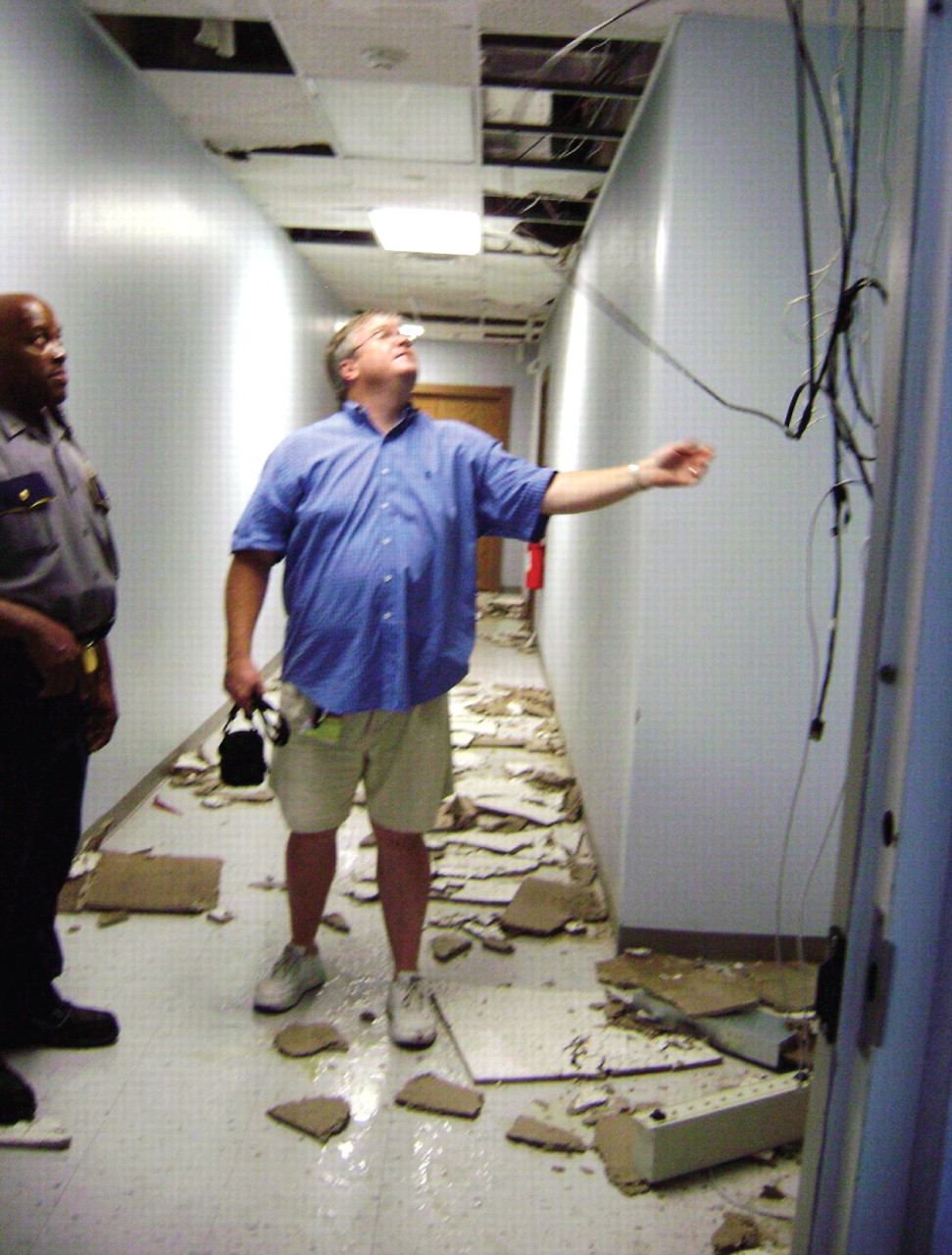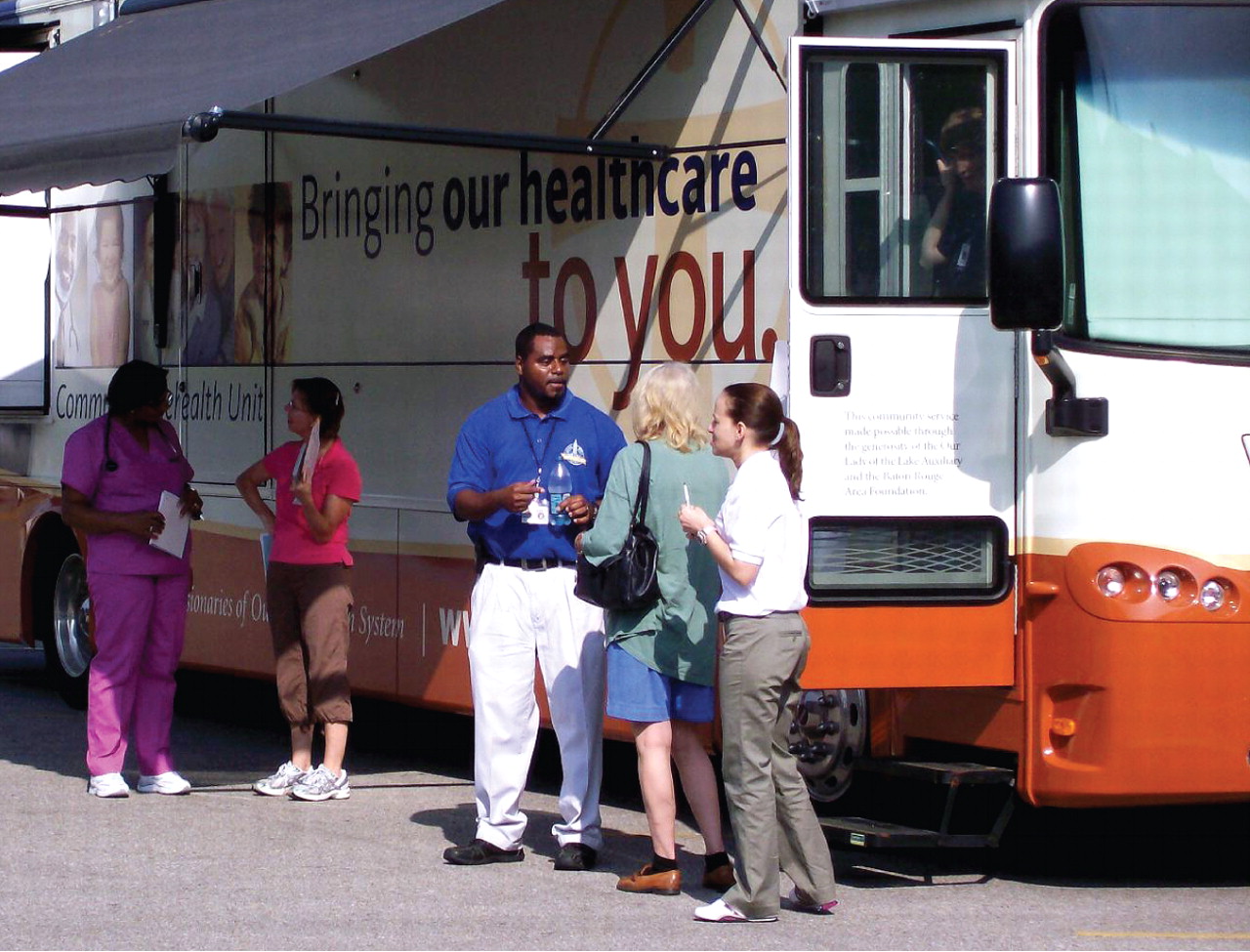Buildings Were Battered, but Not MH Services
Hurricane Gustav may have treated Louisiana less harshly than Katrina, but the lessons learned from the catastrophic 2005 storm kept Baton Rouge's public mental health services in operation despite widespread damage.

Louisiana's Capital Area Human Services District maintained delivery of services after Hurricane Gustav despite losing the roof over its adult and child mental health clinic, developmental disabilities site, and administrative offices in suburban Baton Rouge.
Credit: Capital Area Human Services District
“In Katrina, we were providers” of care for storm victims from New Orleans, said Jan Kasofsky, Ph.D., executive director of the region's Capitol Area Human Services District (CAHSD). “In Gustav, we were providers and victims.”
Gustav left Louisiana's capital city struggling under a burden of broken tree limbs, downed power lines, and wind-damaged buildings. Electric power still hadn't been restored throughout much of the city a week after the storm.
Baton Rouge was hit harder than New Orleans this time, at least in part because the storm's path collided with major power lines feeding the city.
The CAHSD took steps to ensure continuity of its services even before the storm made landfall.
“We printed out all appointments and telephone numbers ahead of time and called clients to tell them when and where they could be seen,” said Kasofsky. “We also contracted with Walgreens Pharmacy so we could call in all prescriptions, which are prepaid and can be picked up at the location closest to the patient.”
Perhaps chastened by Katrina, residents of New Orleans and the Louisiana coast headed inland ahead of Gustav as ordered, said Harold Ginzburg, M.D., J.D., disaster coordinator for the Louisiana Psychiatric Medical Association. Transportation by bus or rail was provided this time for institutionalized or incarcerated persons and for those without cars. Most evacuees had to keep moving on to Mississippi or Texas to find places to ride out the storm, although Baton Rouge churches did provide some space for those who couldn't make it to out-of-state destinations.

Wind and water damage to Louisiana's Capital Area Human Services District's main facilities was so extensive that the building will be out of use for a year while repairs are made.
Credit: Capital Area Human Services District
“Everyone was anxious until the storm passed,” said Ginzburg of his enforced stay at Jacob's Camp in Mississippi, his place of refuge during both Katrina and Gustav. Afterward, some saw this storm as a positive, even therapeutic experience, he said. One patient told Ginzburg of his new-found resiliency in the face of the hurricane.
However, Ginzburg worried that lighter-than-expected damage in New Orleans coupled with heavy traffic and eight-hour travel times during the evacuation would dissuade residents from evacuating the next time a big hurricane looms.
Medical Shelters Established
Baton Rouge, still home to thousands of people dislocated by Katrina, faced a different set of problems with Gustav.
“There were no nonmedical shelters set up in the state,” said Kasofsky. “Along with the Office of Public Health and LSU [Louisiana State University], we set up a medical special-needs shelter in the Pete Maravich Center on the LSU campus.”
Medical-needs shelters were set up in neighboring states too.
The CAHSD teams were responsible for all mental health support for its main shelter and 66 other sites in the region, she said. The LSU shelter took in 330 patients, many of whom had been homebound. Medical care was provided by Earl K. Long Hospital, and nurses were sent from the Department of Public Health. Kasofsky's staff went on 12-hour shifts to provide round-the-clock service and remained on that schedule for over a week.
“In a disaster, you can't stop serving clients,” she said.“ Patients were here asking to see their doctors.”
Her team played another role as well. Critics of disaster planning in the United States have complained in the past that mental health considerations have been left out of the disaster-response infrastructure. The Baton Rouge incident command team not only included a mental health liaison 24 hours a day, but Kasofsky or a member of her staff also served rotating tours of duty as team commanders.

Mobile clinics run by the Children's Health Foundation are parked in front of the Capital Area Human Services District's storm-wrecked building to keep existing appointments and offer triage services to the public after Hurricane Gustav.
Credit: Capital Area Human Services District
About 60 patients were on oxygen when the power in the shelter went out and the backup generator malfunctioned and died. Fortuitously, the blackout happened just before the arrival of Gov. Bobby Jindal (R), who placed a call to the power company, which provided a new generator. Eventually the patients needing oxygen were transferred to a hospital for further care.
Damage Leaves Staff Scrambling
But problems at the shelter were manageable compared with the storm's effects on the CAHSD's headquarters building and main clinic.
“The roof of our largest facility was peeled off, and the building sustained water damage,” said Kasofsky. The agency's largest adult and child mental health facilities, its developmental disabilities services, and all administrative offices are unusable and will be closed for a year.
The staff scrambled to find temporary and then long-term alternative office and clinic spaces and began moving in within a week after the storm. They also transferred $3 million worth of pharmaceuticals into a temperature-controlled building.
The quick response by the staff had clinical benefits, said CAHSD medical director Gerald Heintz, M.D.
“Because we made it known that we were in operation and taking walk-ins, we prevented a lot of decompensation—and hospital beds were in pretty short supply to begin with,” said Heintz in an interview.
The experience reinforced the lessons of prior hurricanes.
“Decision makers have to be on the ground to see for themselves what's going on,” Kasofsky emphasized. “Management must be visible as well. Let the staff trouble-shoot, give them input and feedback and honest answers to questions. You have to be clear and give direction, but you also have to be flexible.” ▪



